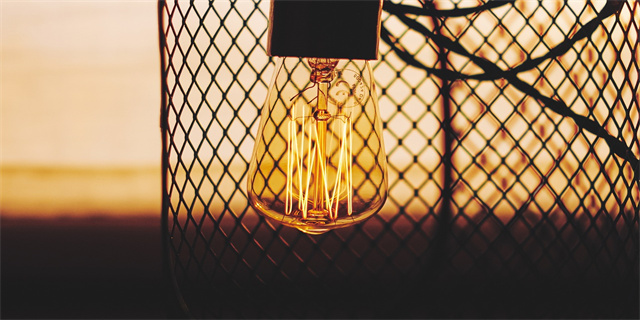首页 > 教育与人 正文
Understanding the Abdomen: A Closer Look at Our Core
The abdomen is a crucial part of the human body, often referred to as the core. It plays a significant role in supporting the spine, protecting our vital organs, and facilitating various bodily functions. Let's explore the intricacies of the abdomen, its structure, and its vital functions.
The Anatomy of the Abdomen
Before delving into the functions of the abdomen, it's essential to understand its anatomy. The abdomen is divided into four major quadrants: the right upper quadrant (RUQ), left upper quadrant (LUQ), right lower quadrant (RLQ), and left lower quadrant (LLQ). These quadrants help physicians locate and diagnose specific conditions or problems in the abdomen. Additionally, the abdomen consists of various layers, including the skin, subcutaneous tissue, muscles, and visceral organs.
The Muscles of the Abdomen
One of the key components of the abdomen is its muscles, which provide support and stability. The most prominent abdominal muscles are the rectus abdominis, external obliques, internal obliques, and transversus abdominis. These muscles not only help maintain posture but also contribute to movements such as bending, twisting, and flexing. When these muscles are strong and well-conditioned, they can effectively protect the organs within the abdominal cavity.

The Functions of the Abdomen
The abdomen serves several vital functions in the human body. Let's explore some of these functions in detail:
Protection of Internal Organs
One of the primary roles of the abdomen is to protect our internal organs. The abdominal muscles, together with the ribcage, act as a shield, safeguarding organs such as the liver, stomach, spleen, and intestines from external forces. Additionally, the layer of subcutaneous fat in the abdomen provides further cushioning and protection.

Digestion and Absorption
The digestive system is essential for breaking down food and absorbing nutrients. The abdomen houses many vital organs involved in digestion, such as the stomach, liver, gallbladder, and intestines. These organs work in harmony to break down food into smaller particles, extract essential nutrients, and eliminate waste products. Without the abdomen's contribution to digestion, our bodies would struggle to obtain the necessary nutrients for survival.
Respiration and Breathing
Although the abdomen may not be the first area that comes to mind when thinking about breathing, it plays a crucial role in the process. The diaphragm, a dome-shaped muscle located under the lungs, separates the chest cavity from the abdominal cavity. During inhalation, the diaphragm contracts and moves downward, causing the abdomen to expand. This expansion creates a vacuum that draws air into the lungs. When exhaling, the diaphragm relaxes, and the abdomen returns to its original position.

Maintaining a Healthy Abdomen
Given the abdomen's significance in our overall well-being, it's important to take steps to maintain its health. Here are a few key practices to promote a healthy abdomen:
Regular Exercise
Engaging in regular physical activity not only strengthens the abdominal muscles but also improves overall core stability. Exercises such as planks, sit-ups, and yoga poses specifically target the abdominal muscles, helping to maintain their strength and flexibility.
Healthy Diet
A nutritious and balanced diet is essential for maintaining a healthy abdomen. Consuming a variety of fruits, vegetables, lean proteins, and whole grains provides the necessary nutrients for optimal abdominal function. It's important to limit the intake of processed foods, sugary beverages, and excessive amounts of saturated fats to avoid abdominal discomfort and potential health issues.
Proper Posture
Poor posture can place unnecessary strain on the abdomen and its surrounding muscles. Whether sitting or standing, maintaining good posture helps distribute the weight evenly, preventing excessive stress on the abdominal region. Practicing activities such as Pilates or yoga can help improve posture and alignment.
In Conclusion
The abdomen, our core, is not only responsible for providing support and stability but also plays a vital role in digestion, respiration, and protection of our internal organs. By understanding its anatomy and functions, we can appreciate the significance of maintaining a healthy abdomen. Through regular exercise, a balanced diet, and proper posture, we can promote the well-being of this crucial part of our body.
猜你喜欢
- 2024-07-25 精武风云·陈真(陈真与师徒江湖)
- 2024-07-25 abdomen(Understanding the Abdomen A Closer Look at Our Core)
- 2024-07-25 浙江爱仕达电器股份有限公司(浙江爱仕达电器股份有限公司:助力家居生活的创新引领者)
- 2024-07-24 中国移动湖南网上营业厅(中国移动湖南网上营业厅:便捷、高效,随时随地为您服务)
- 2024-07-24 广西移动网上营业厅(广西移动网上营业厅:便捷、快速、安全的服务)
- 2024-07-24 cartoontube(Cartoontube Bringing Entertainment to Your Screens)
- 2024-07-24 草字头加官怎么读(草字头与官怎么读)
- 2024-07-24 易方达基金管理公司(易方达基金的发展历程)
- 2024-07-24 动漫人物图片男生(动漫人物形象男生欣赏)
- 2024-07-24 亲爱的小孩在线观看完整版(亲爱的孩子们,请在线观看完整版)
- 2024-07-24 四川电影电视职业学院(四川电影电视职业学院——培养电影电视人才的摇篮)
- 2024-07-24 贫困补助申请书(申请贫困补助的请求信)
- 2024-07-25精武风云·陈真(陈真与师徒江湖)
- 2024-07-25abdomen(Understanding the Abdomen A Closer Look at Our Core)
- 2024-07-25浙江爱仕达电器股份有限公司(浙江爱仕达电器股份有限公司:助力家居生活的创新引领者)
- 2024-07-24中国移动湖南网上营业厅(中国移动湖南网上营业厅:便捷、高效,随时随地为您服务)
- 2024-07-24广西移动网上营业厅(广西移动网上营业厅:便捷、快速、安全的服务)
- 2024-07-24cartoontube(Cartoontube Bringing Entertainment to Your Screens)
- 2024-07-24草字头加官怎么读(草字头与官怎么读)
- 2024-07-24易方达基金管理公司(易方达基金的发展历程)
- 2024-07-24容槿傅宵权全文免费阅读(容槿傅宵权小说在线免费阅读)
- 2024-04-08股票601818(中国光大银行:稳中求进,全力发展)
- 2024-04-11hcpl2630(HCPL2630:高速光耦合器的优势与应用)
- 2024-05-31错误码0x00000001(错误码0x00000001分析与解决办法)
- 2024-06-06欧时力男装官网(欧时力男装:时尚品质与优雅兼具)
- 2024-07-12一本有魔法的书300字三年级(一本神奇的魔法书)
- 2024-05-12addition(Mastering the Art of Addition A Guide to Improving Your Math Skills)
- 2024-05-29chua怎么读(如何正确发音和理解Chua)
- 2024-07-25浙江爱仕达电器股份有限公司(浙江爱仕达电器股份有限公司:助力家居生活的创新引领者)
- 2024-07-24中国移动湖南网上营业厅(中国移动湖南网上营业厅:便捷、高效,随时随地为您服务)
- 2024-07-24动漫人物图片男生(动漫人物形象男生欣赏)
- 2024-07-24天舞纪百度百科(天舞纪:传世经典网络游戏的辉煌征程)
- 2024-07-24惠普官方旗舰店(惠普官方旗舰店——科技与品质的完美结合)
- 2024-07-24苹果ipadmini(苹果iPad mini:小巧便携的强大工具)
- 2024-07-24namecheap(便宜注册域名,第一选择:Namecheap)
- 2024-07-24搜索引擎营销案例(搜索引擎营销案例分析:利用 SEO 和 PPC 的数字营销策略)
- 猜你喜欢
-
- 精武风云·陈真(陈真与师徒江湖)
- abdomen(Understanding the Abdomen A Closer Look at Our Core)
- 浙江爱仕达电器股份有限公司(浙江爱仕达电器股份有限公司:助力家居生活的创新引领者)
- 中国移动湖南网上营业厅(中国移动湖南网上营业厅:便捷、高效,随时随地为您服务)
- 广西移动网上营业厅(广西移动网上营业厅:便捷、快速、安全的服务)
- cartoontube(Cartoontube Bringing Entertainment to Your Screens)
- 草字头加官怎么读(草字头与官怎么读)
- 易方达基金管理公司(易方达基金的发展历程)
- 动漫人物图片男生(动漫人物形象男生欣赏)
- 亲爱的小孩在线观看完整版(亲爱的孩子们,请在线观看完整版)
- 四川电影电视职业学院(四川电影电视职业学院——培养电影电视人才的摇篮)
- 贫困补助申请书(申请贫困补助的请求信)
- 中日韩一卡二卡三卡四卡免(中日韩旅游攻略:一卡通畅游四国)
- 个人所得税起征点是多少(个人所得税起征点:多少才合理?)
- 叶辰萧初然最后的一章(叶辰与萧初然的终章)
- 演员请就位在线观看(在线观看,演员请就位)
- 心中的玫瑰简谱(我的心中的花朵)
- 妯娌的三国时代大结局(三国时代的妯娌之谜)
- 有福气的女人面相(享受好运:拥有福气的女人面相)
- 疯狂进化的虫子(狂热演化的昆虫界)
- 天舞纪百度百科(天舞纪:传世经典网络游戏的辉煌征程)
- 我靠玄学征服豪门(玄学征服豪门)
- 四川大学锦城学院教务网(四川大学锦城学院教务网官方通知)
- 手机号码价值评估(手机市场的热度与竞争)
- 维多利亚一号下载(维多利亚一号:航行世界的巨人)
- 金秘书为何这样(金秘书的职责和重要性)
- winrar50(WinRAR50:一把高效解压神器)
- 农业银行上班时间(农业银行工作时间详解)
- 江西煤矿安全监察局(江西煤矿安全监察局:确保煤矿安全,保障人民生命财产安全)
- 惠普官方旗舰店(惠普官方旗舰店——科技与品质的完美结合)
